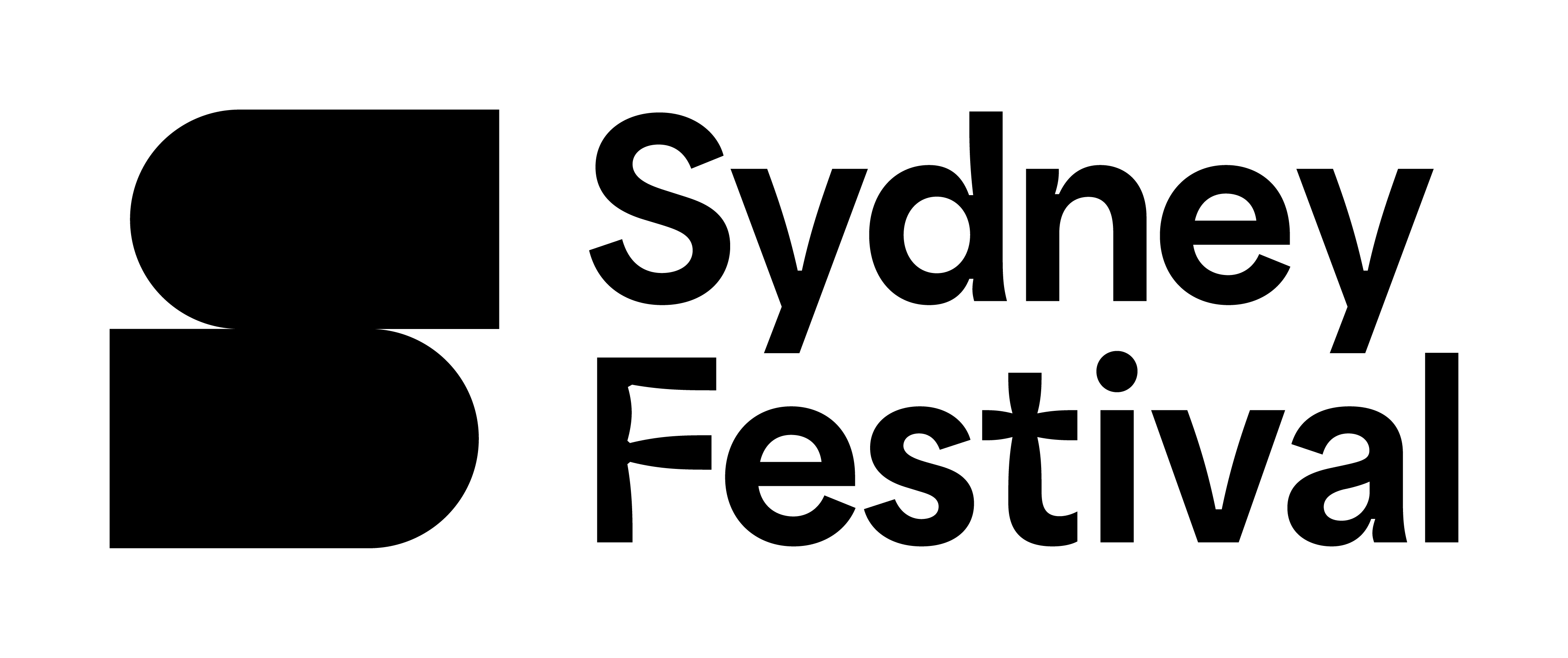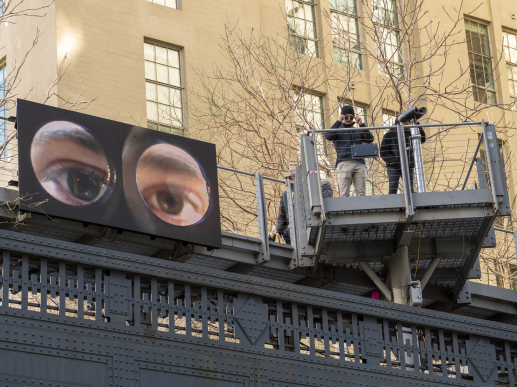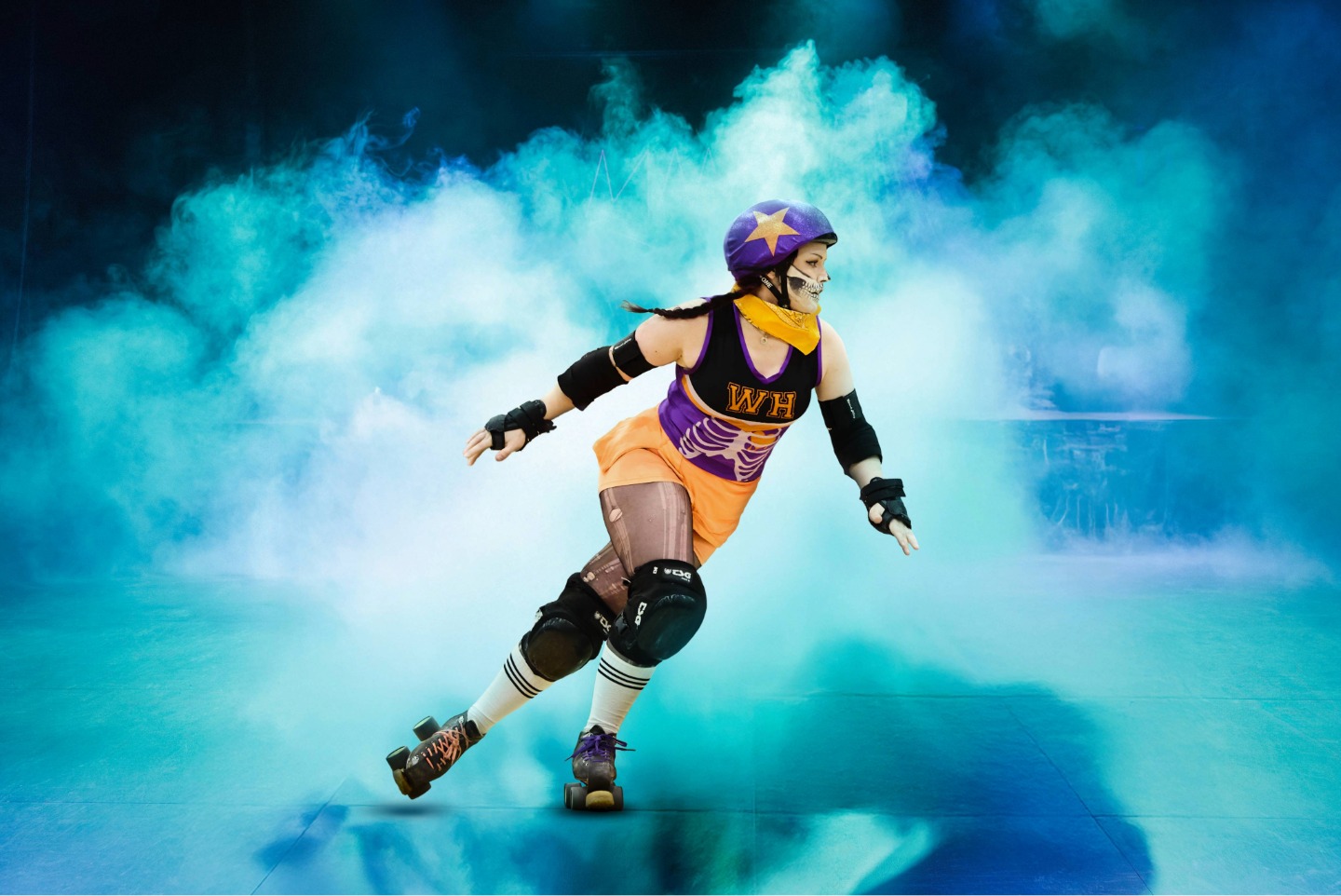This January, a set of custom-made bronze binoculars will be mounted in Darling Harbour, like a typical tourist viewpoint. Anyone can step up to the binoculars and spy on their surroundings but be warned – a camera inside the binoculars will be broadcasting live video of your peeping eyes to an adjacent screen.
This subversive installation, Observer Observed, was created by sculptor Julia Phillips, whose work examines relationships between individuals and the public, between people and institutions. It invites you to think about public surveillance and what it really means to “look”.
Here Julia answers our questions about the work, and her fascinating practice.
Could you paint us a picture of Observer Observed? If a passerby was to stumble across the installation and experience it, what would they find, and how might they feel?
When approaching Darlng Harbour's Pyrmont Bridge on the south side, viewers will encounter a publicly accessible set of binoculars on a stand, as often found in observatories or scenic destinations. It consists of binoculars, housed in a custom-made bronze cast and attached to a stainless-steel pole, with a large LED screen adjacent, projected out towards the harbour. Visitors can interact with the sculpture by looking through the binoculars onto the harbour, streets, and buildings—while the LED screen transmits live footage of the visitor’s eyes, captured by a camera inside the binoculars.
The title of the work, Observer, Observed, refers to the power dynamics at play between perception and spectatorship in public space. Viewers might feel compelled to get a closer view of their surroundings, while becoming part of a large publicly visible image with their eyes.
"In a way the price to see up close is to temporarily give up one’s own anonymity."
What does the work communicate about surveillance and spectatorship, and why did you feel compelled to make art on these themes?
In a way the price to see up close is to temporarily give up one’s own anonymity.
In a technological climate of increasingly present cameras, be it in public spaces, at grocery self-checkouts, or facial recognition devices – such as our own phones – I consider the experience of spectatorship quite one-directional. Social media adds another dimension to the idea of surveillance and observation, and the possibility of anonymous lurking. In times where we rather stare at our phones than out of the window, and into our neighbour’s home – always at the chance of being noticed – the closing scene of Alfred Hitchcock’s Rear Window from 1954 really resonated with me. The protagonist Jeff muses, “I wonder if it is ethical to watch a man with binoculars and a long-focus lens” to which his lover Lisa replies, “I’m not much on rear-window ethics”.
The human body often features in your work, what do you enjoy about working with it?
There is a familiarity, intuitiveness, and therefore accessibility to human form. Viewers can identify with parts of the body, even when the overall work they are encountering might not reveal its concept quickly and entirely. I used to spend a lot of time in the New York Met’s armour section, and always enjoyed imagining bodies in the negative spaces. The same goes for doctors’ offices, medical furniture, agricultural tools and other devices that connect the human body to its surroundings.
"My work almost always starts with a title... Language is a powerful tool for analysing and laying bare the mechanisms behind interpersonal relationships."
Can you speak a little about your creative process? How does inspiration strike for a new work, in its earliest stages?
My work almost always starts with a title, and these titles describe relations, a role, a person, a function, all at once. Language is a powerful tool for analysing and laying bare the mechanisms behind interpersonal relationships, but also behind more structural and political relations.
Observer Observed’s debut on the High Line in New York was your first largescale public artwork. What new possibilities are there with this format and how might it affect your practice?
The installation at Darling Harbour gives the work a new opportunity to allow for a look at scenes that take place on the water. Even though the original installation on the High Line was close to Hudson River, the sight-lines were not comparable to its Sydney location on a bridge. The LED screen in this new iteration will be significantly larger and the eyes of viewers will be visible from a much wider area, which is exciting.
I am curious about the view of the screen from a steep angle and trying to make sense of what one is looking at until seeing the eyes more frontally. The idea of a static artwork, that has moving elements – such as the live feed – is something I will be thinking about more in the future.
"The installation at Darling Harbour gives the work a new opportunity to allow for a look at scenes that take place on the water."
Do you anticipate Observer Observered’s new location in Sydney’s Darling Harbour might influence the experience and meaning of the work? And if so, how?
There is something captive about a harbour or a bay. I imagine that the installation and especially the set of eyes gazing from afar will have a maybe more imposing presence in this iteration.
What are you working on now? Are there more public and interactive artworks on the horizon for you?
I am currently preparing my first institutional solo exhibition in the UK that will open at the Barbican Art Centre in London in late January. There are no concrete public artwork projects on the horizon, but I would be thrilled to think more about it once the right opportunity comes along.





